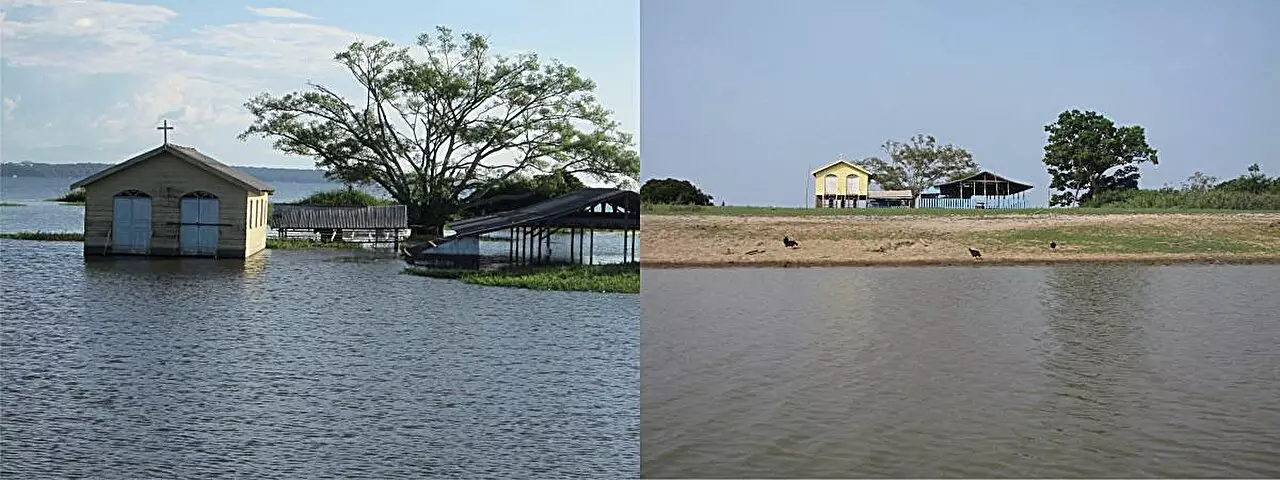The Amazon Rainforest, often referred to as the lungs of the Earth, plays an integral role in regulating global climate. However, as climate change accelerates, extreme temperatures and varying humidity levels pose unprecedented challenges to this vital ecosystem. Recent research authored by a team from the University of São Paulo (USP) sheds light on how these climatic shifts may amplify methane emissions from flooded areas, while simultaneously diminishing the capacity of upland forests to absorb this potent greenhouse gas. The findings underscore an urgent need for robust conservation strategies to mitigate the impending global repercussions of these transformations.
Methane, a greenhouse gas with a heat-trapping capability significantly higher than carbon dioxide, is predominantly released from wetlands, including the vast floodplains of the Amazon. Floodplains, which cover more than 800,000 square kilometers, contribute substantially to global methane emissions. The study indicates that these saturated regions are vital to understanding how methane dynamics will evolve under climate change, particularly as microbial communities become active in breaking down organic matter submerged in water. It is alarming to note that Brazilian floodplains contribute nearly 29% of methane emissions from global wetlands.
In contrast, the region’s upland forests perform as natural methane sinks, effectively capturing this greenhouse gas and helping to mitigate its presence in the atmosphere. This dual role—emitting from floodplains and absorbing in upland forests—illustrates the delicate balance that exists within this ecosystem. However, climate change threatens to disrupt this equilibrium.
In the study led by Julia Brandão Gontijo, researchers utilized a sophisticated experimental framework to analyze how varying conditions, particularly elevated temperatures (27°C and 30°C) and alterations in humidity, affect the microbial community dynamics in both floodplains and upland forests. Although initial observations revealed no significant shifts in methane emission rates from the floodplains, the increase in methane-producing microorganisms raised concerns. Such proliferation of these microorganisms signals a potentially complex problem for future greenhouse gas management.
Gontijo’s findings indicated a drastic 70% reduction in methane consumption in the upland forest soils during warm and arid conditions. Conversely, increased rainfall led to a marked uptick in methane production from the floodplains, as these soils were ill-prepared to handle high levels of moisture. This disparity in response indicates that while floodplain microbes may adjust to a changing climate, the upland forest microbiome appears more susceptible to the adverse effects of climate change. This imbalance may portend dire consequences for global greenhouse gas emissions, given the Amazon’s integral role in carbon cycling.
The global ramifications of these findings are indeed sobering. Atmospheric methane levels have surged approximately 18% in the last forty years. If this trend continues without intervention, global temperatures may rise further, exacerbating climatic extremes and further stressing the delicate Amazon ecosystem. The increasing volume of methane produced in floodplains juxtaposed with the declining capacity of upland forests to mitigate greenhouse gas emissions could amplify the greenhouse effect and contribute to more pronounced climate extremes worldwide.
The researchers are poised to engage in field experiments and laboratory studies to gain deeper insights into the microbial interactions in the Amazon ecosystem. Their aim is to map out the dynamics of methane cycling, particularly identifying methanotrophic microorganisms that have the remarkable capability of using methane as an energy source. This insight could pave the way for innovative strategies that enhance the natural processes capable of offsetting methane increases.
In light of the overwhelming evidence and the urgency of the situation, the researchers advocate for robust conservation and management policies. Given the Amazon’s unparalleled importance in mitigating climate change, global stakeholders must prioritize its preservation. Effective policy formulation rooted in scientific research can ensure that we safeguard this vital ecosystem against the adverse effects of climate change.
As we unravel the complex interdependencies of the Amazon Rainforest’s microbiological communities, it becomes increasingly clear that proactive measures are necessary to halt or even reverse the impending challenges presented by climate change. The resilience of this ecosystem depends not just on the scientific community, but also on collective global action aimed at protecting one of Earth’s most precious natural resources.


Leave a Reply